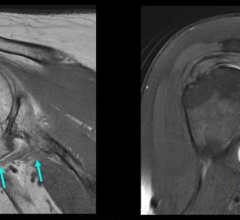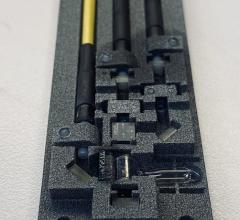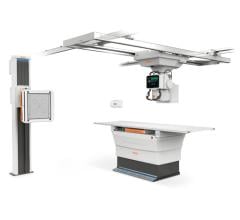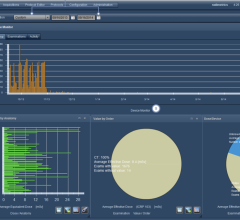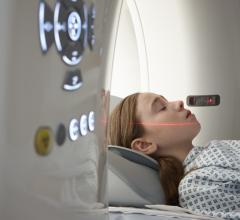
Terry Chang
CT multislice modalities have turned up the volume of the already dense stacks of reports radiologists must thoroughly examine, and unless a hospital can increase the number of trained techs on staff, more radiologists are relying on computer-aided detection (CAD) to assist in detecting suspicious nodules in the lung. While R2 Technology’s ImageChecker CAD Lung CT solution meets the growing need for CAD technology in radiology, Terry Chang, director of CT CAD Marketing, R2 Technology, explains how it is just the tip of the iceberg for the clinical applications for CAD.
What are the most important technological considerations for hospitals when evaluating computer-aided detection (CAD) for CT lung?
Hospitals should carefully evaluate CAD systems from both a clinical and workflow perspective, given that not all systems are created equal. In addition to reviewing FDA labeling to support efficacy, sites should also ensure that peer-reviewed clinical studies and abstracts support the effectiveness of systems they are considering. For example, a recently published clinical study using R2 Lung CAD reported that CAD detected significant lung nodules that were not previously reported in 33 percent of cases.
References from routine users at other facilities can also help in evaluating a CAD system. We are pleased to have several satisfied users of our CT CAD system, including Dr. David Mendelson at the Mt. Sinai Medical Center in New York City who said, “The R2 CAD system is definitely ready for prime time and is a very useful product.” These types of testimonials help to support the efficacy of a CAD system.
CT CAD systems should also be evaluated on how findings are managed “downstream” after a nodule is found. Accurate nodule measurements, such as volume, diameter and density, should be performed automatically, and the system should be able to quickly compare subsequent CT studies to track these changes over time. These features will not only minimize intra-reader variability but also save time and reduce the tediousness.
A CAD system’s ability to be configured to a site’s needs is critical. It is important to consider the different ways CAD can be implemented based on your individual environment. For example, seamless image transfer from the CT scanner to the CAD system is expected, but will the physician utilize CAD on a dedicated workstation? Can CAD results be displayed and stored on PACS? Will CAD integrate into your existing 3-D workstation? Such considerations will help ensure that CAD is not disruptive.
What are some of the key challenges CAD for CT lung faces in convincing physicians and hospitals to adopt and implement the technology?
CAD is still a relatively new concept. Some physicians and hospitals are still skeptical of CAD’s benefits and its return on investment, especially if it is not reimbursed. However, in recent years, the number of images to review has increased dramatically, while the number of radiologists has remained relatively flat. Any technology that can help increase the physician’s effectiveness and efficiency in identifying and managing potential abnormalities will add value. At the same time, CAD needs to be integrated well into the workflow, and CAD vendors need to facilitate this.
Another challenge is the fact that there is not a national program of CT screening for early detection of lung cancer, which would bolster the need for CAD. However, imaging centers should always be concerned about oversight of actionable lung nodules on CT images, even when done for other clinical assessments such as cardiac, trauma, pulmonary embolism and chronic interstitial lung disease. That is why CAD for lung nodule detection can be helpful with every chest CT exam.
How can CAD for CT lung improve its accuracy, thus decrease false positives?
A CAD algorithm is only as smart as its design and inputs. Therefore, R2 continually acquires new patient cases to improve and refine its algorithms. For CT lung CAD, anatomical segmentation capability is key. Before attempting to detect any nodule, the algorithm must be smart enough to first identify and differentiate normal anatomy such as lung tissue and vessels. This will improve the false positive rate and also allow more accurate nodule measurements, which is crucial for temporal comparison.
How can hospitals and clinics justify the cost of CAD for CT lung?
CAD complements the physician to minimize the risk of observational oversights, improve measurement accuracy and save time. Finding nodules within hundreds of CT image slices is a tedious task. The efficiency improvements that CAD provides is not only finding smaller nodules but also helping to automatically compare them over time. This will pay back the hospital with increased productivity and cost savings. I once asked a radiologist how he measured lung nodules today, and he pulled out his business card to show how he used it as a crude caliper on the image review monitor. There is a better way to detect and measure nodules, and it is CAD. Reimbursement will, of course, serve to further improve cost justification someday.
Finally, CAD can differentiate a clinical practice in a competitive referral market. We’ve learned from our mammography CAD business that patients will often seek facilities that offer CAD.
Several vendors are awaiting 510(k) clearance from the FDA to introduce their CAD for CT lung. Why are there so many players trying to penetrate this new market?
The data explosion from technological advances in medical imaging is surpassing physicians’ ability to interpret and manage the data. This is especially true for CT lung and colon imaging. Vendors are responding by providing the tools necessary to fight these deadly diseases more effectively and efficiently. The real challenge for vendors is to ensure the clinical efficacy of the CAD systems they develop, not just to claim a “me-too” product. Our goal at R2 is to lead the market with CAD innovations that meet physicians’ evolving needs.
Where do you see the strongest growth market for CAD for CT lung emerging and why?
The strongest growth market for CT lung CAD is in hospitals and clinics that require an enterprise CAD solution. CT lung analysis is no longer just a toolkit on a single workstation. CAD adds intelligence to data and hospitals want this technology and the results accessible to all clinicians that are involved with a patient’s continuum of care. Radiologists, oncologists, pulmonologists and even cardiologists have an interest in what CAD has detected in the lung and how those findings are managed. As a result, the ability for CAD systems to integrate into PACS will be a key driver of utilization.
What is your vision of the future for CAD for CT lung based on emerging trends?
We believe that CAD will increasingly become the standard of care with CT chest exams to detect and manage actionable lung nodules and pulmonary artery filling defects such as emboli. In addition, CT CAD will expand to a growing list of diseases to help not only with detection but also to provide additional decision support, enhanced reading workflow and improved patient management.
The ability to provide CAD throughout the enterprise as a patient management tool will be an expectation. Standalone CAD workstations may become obsolete as CAD applications migrate to function on PACS workstations.
In the next five years, R2 will continue to apply our CAD expertise not only to aid in detection and management of abnormal findings in various parts of the body but to also explore methods to complement diagnosis of various diseases.
NOTE: R2’s ImageChecker CAD system for CT lung has approval through the FDA’s pre-market approval (PMA) process and can claim effectiveness and safety in detecting actual nodules.

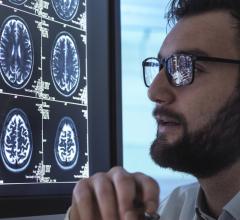
 May 14, 2024
May 14, 2024 

